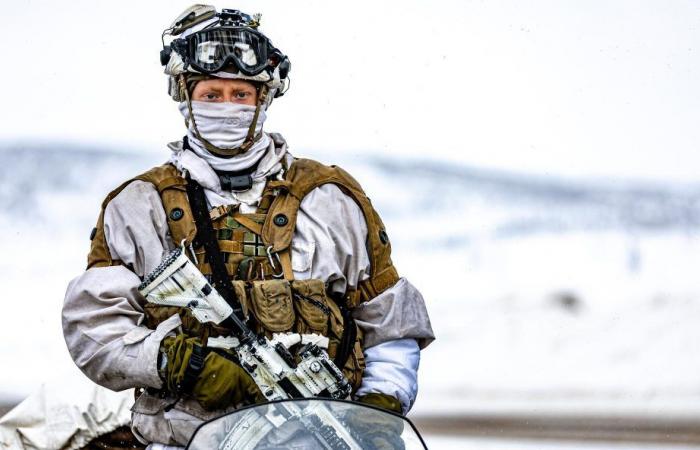Think tank in Estonia casts doubt on Swedish and Finnish ability to meet NATO’s force requirements.
Published: 26/04/2024 22:15
The short version
- Estonia’s leading think tank questions Sweden’s and Finland’s ability to meet NATO’s force requirements. They believe the countries lack the necessary ground forces and mobility for quick action in a possible conflict.
The summary is created with the help of artificial intelligence (AI) and quality assured by Aftenposten’s journalists.
Short version is for subscribers only
The Baltic Sea has become a NATO sea. Eight out of nine countries that surround the Baltic Sea are members of the alliance. In 1990 it was only Denmark and Germany. Sweden and Finland’s membership is welcomed by them three Baltic countries three Baltic countriesEstonia, Latvia and Lithuania as an important supplement to the defense in the region in the event of a conflict with Russia.
Swedish membership is a “historic turning point that will strengthen security in our entire region”. Kaja Kallas determined that in March. She is the Prime Minister of Estonia. Her Foreign Minister Margus Tsahkna stated that the membership “makes it possible to respond even more effectively to threats in our region”.
But the sea is rough.
Lacks ground forces and mobility
NATO’s new plans mean that the alliance will be able to field 300,000 soldiers within 30 days. Sweden and Finland are expected to contribute. They should each be able to provide a full one brigade brigadePlus/minus 4,000 soldiers. for efforts in the Baltics. They must be able to be deployed at short notice as deterrence or reinforcement.
But they do not yet have such strengths, it is pointed out in a new report. It is published by Estonia’s leading think tank on defense and security issues, ICDS ICDSInternational Center for Defense and Security. Established in 2006. In 2018 merged with Estonia’s Foreign Policy Institute..
The main reason is this: Finland attaches great importance to having stationary ground forces along the border with Russia. Both attach importance to defending their own territory. The ability to send forces abroad is limited.
Ikea brigades
The Swedes are also struggling with recruitment, although plans are now being made to take in more conscripts. On Friday, it became clear that Sweden is planning a major rearmament of the Armed Forces in the coming years. But resources are still lacking to reach the level needed to have an effective and mobile force. At least that’s what Swedish analysts think, according to the report.
The conclusion is also that Sweden has all the pieces of the puzzle needed to meet NATO’s requirements. But they haven’t put them together yet.
The Swedes “have an Ikea brigade model”, says the Estonian report, which can be found here.
Risks becoming too Nordic
Finland and Sweden want to contribute to a strong Nordic identity in NATO. It may weaken the ability to contribute effectively in the Baltics. Disagreement about which regional headquarters the new countries should be subject to shows such a conflict. That’s what the authors behind the Estonian report think.
But the most difficult part of membership can be: “overcoming the mental and cultural challenges”.
Finland has so far had a popular and self-reliant defense model. Now there are requirements for allied unity and collective defense that apply. Sweden’s tradition of neutrality has become a “defining element” for the entire society. As a democracy and welfare state.
Fear is expressed that the benefit of Swedish and Finnish enrollment “will only be partially realised”. And there are questions about Sweden’s willingness to take a leadership role in the Nordic-Baltic region.
Fear the bear in the east
The fear of a Russian attack is strong in the Baltics. The countries are small. The Balts have no areas to retreat to if they are invaded. One thing from Russia’s major attack on Ukraine in 2022 was particularly noted: After a month of war, the Russians controlled 161,000 km² of Ukrainian soil. The three Baltic countries are only slightly larger: 175,000 km².
The Baltic Sea area is very important for Moscow.
Kaliningrad with nuclear weapons
Ports such as St. Petersburg and Primorsk mean a lot to Russia’s oil exports and imports of food and consumer goods.
The Baltic Sea is also important for Russia’s military forces. The Kaliningrad enclave is home to the Baltic Fleet and possible nuclear weapons. It is also an important transport hub, as it is Russia’s only port on the Baltic Sea that is ice-free all year round. Tensions between Russia and the EU over access to Kaliningrad continue to rise.






